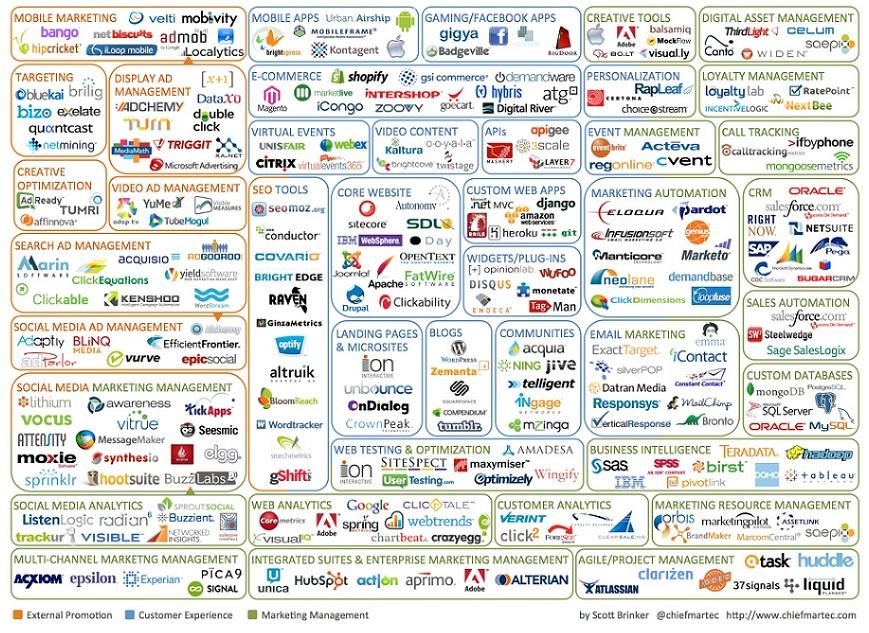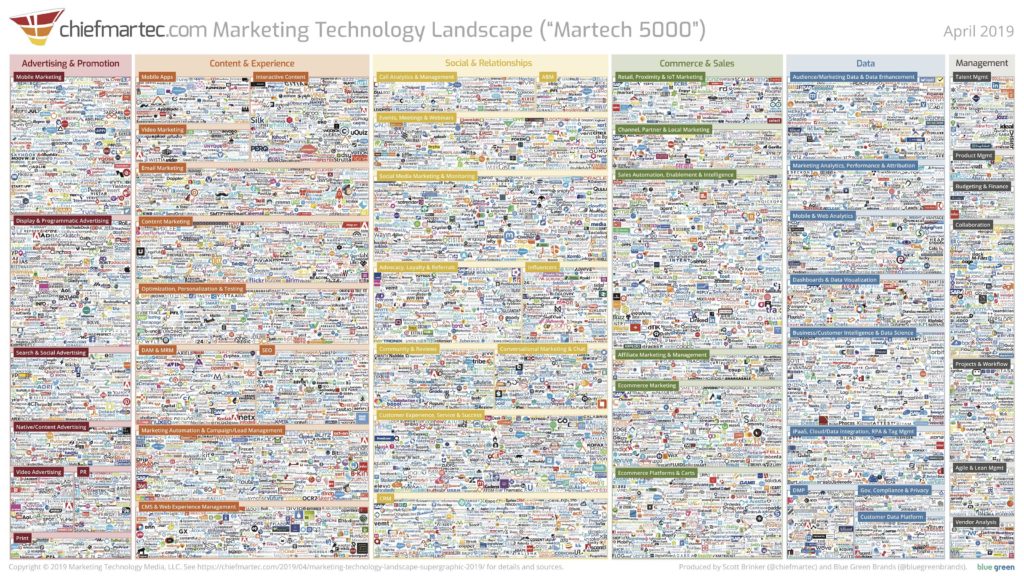Despite the fact that 65% of all investor interactions occur online, only 44% of investors say that their financial advisors do a good job of sharing best practices related to their investment goals.
This gap in providing expert messaging and content to an eager audience is just one example of why financial advisors need to improve their marketing, deliver better customer experiences, and focus on delivering relevant educational messaging and content to prospective and existing investors.
The good news is that roughly 80% of firms are expected to increase their online marketing budgets moving forward, so clearly most financial advisories recognize the need to step up their game. Now, the challenge for many of these wealth managers becomes determining how and where to spend those marketing dollars to expand their assets under management and grow their respective firms.
The reality is that it’s nearly impossible to plan, develop, distribute, track, and optimize a holistic series of marketing campaigns across all pertinent channels manually. Even those financial marketers who are able to miraculously launch their campaigns without a coordinated technological approach are almost certainly delivering mismatched and uninspired programs — and also failing to collect accurate and actionable data to understand their audience and deliver what they truly need to advance along their investment journey.
Simply put, disjointed tactics executed manually are guaranteed to deliver customer experiences that are confusing at best — which means fewer clients, fewer assets under management, and less revenue for your firm.
So if you’re part of the 80% mentioned above, you should be thinking about how you can build a marketing technology (MarTech) stack that empowers your financial advisory firm to scale your marketing efforts and capitalize on the most lucrative areas for growth.
What Is a Marketing Technology Stack?
A marketing technology stack is the collection of all the different marketing-related software that an organization uses to plan, develop, execute, track, and optimize their marketing efforts. Due to the wide array of marketing technology solutions available, MarTech stacks vary significantly among different industries and even from company to company within those industries.
In fact, the playing field is so diverse that Scott Brinker of Chief Martec has been creating a digital representation of all of the MarTech vendors every year since 2011 to try to make sense of it all.
Here’s what the “Marketing Technology Landscape Supergraphic” looked like in 2011…

And here it is again in 2019…

In just eight years, the MarTech space exploded from a measly 150 vendors to more than 7,000! And while the 2019 edition grew by only 3% over the last year, that still leaves an overwhelming amount of choice for financial marketers who are just beginning to develop their MarTech stack.
What Marketing Pain Points Is Your Financial Advisory Firm Trying to Solve?
It would seem that the next logical question would be, “What marketing technologies does my firm need to thrive?” Well, before you can properly answer that question, you need to assess your primary pain points honestly and accurately.
The first step toward understanding what you need is understanding where you’re struggling. That is, you need to identify your primary pain points before you begin researching potential MarTech solutions.
Of course, you’re probably looking to gain more clients and grow your assets under management, but you need to look deeper to uncover where the root of the problem lies.
Are you looking to build better awareness of your firm? Is it difficult to gather actionable demographic and behavioral data? Maybe you’re trying to drive more leads? Perhaps you’ve got plenty of leads, but you’re not creating the type of experiences your investors are yearning for.
Whatever the case might be, you need to take a hard look at your current marketing efforts (or the lack thereof) and work from there. If not, you could wind up investing in the wrong MarTech solutions that don’t work well together and don’t fix the problems you’re so eager to solve.
Here are a few questions you should answer as you go about this process:
- What marketing technologies are we currently using, and are they essential to our strategy?
- Is my team comfortable using each of these solutions to their maximum capabilities?
- Am I able to gather the information I need to understand my clients and speak to their interests and pain points?
- How am I aggregating and integrating my existing marketing campaigns? Are they synced or disconnected?
- Which marketing tactics am I able to automate, repeat, and optimize with minimum manual work?
- Am I able to coordinate my marketing efforts with my sales efforts to generate more customer opportunities?
The point of having a stable and powerful MarTech stack is to increase efficiencies, deliver better marketing campaigns, and measure your efforts for marked improvement over time. So if your current situation is preventing you from answering “YES!” to any of the questions above, it’s time to set a baseline of essential MarTech elements for your financial advisory firm.
What Are the Essential MarTech Elements for Financial Advisors?
Once you’ve performed a thorough audit of what you’re lacking and what you currently have in place, it’s finally time to start building a blueprint of which MarTech solutions will help propel your firm toward more efficient and successful marketing.
The ideal MarTech stack will consist of consolidated solutions that allow you to perform a wide range of marketing and sales-related activities from just a few deeply connected platforms.
Let’s examine your potential needs and which software elements would be the best fit.
Content Marketing: If content creation is the heart of good marketing, content distribution is the entire cardiovascular system. Delivering informative and entertaining content can serve as your foot in the door for new customers and also improve existing customer relationships for upsell and cross-sell opportunities, as well as customer retention and evangelism.
The thing is, though, manually delivering content to each of your audience segments is extremely challenging, so your firm needs to look for tools that help you automate your content delivery strategies. More specifically, you need a single platform where you can store your content, create landing pages and forms to gate the content and drive conversions, and then disseminate the content to segmented audiences through personalized outreach.
Most marketing automation platforms will allow you to do all of the above, but some are easier to use, more efficient, and more effective than others. Look for a tool that allows you to build and share templates easily so that you can automate these processes while ensuring brand consistency and neatly gather and segment your leads based on the content your audience is consuming.
Social Media Marketing: Tools like Hootsuite, Sprout, and Buffer are all excellent platforms that allow you to do far more than just schedule and post your social content. However, since one of the main goals in building out your MarTech stack is to keep things lean wherever possible, you might want to avoid these tools, as they’re not known for easily integrating with a larger stack.
Instead, you should look for a marketing automation platform that has a built-in social media marketing feature that allows you to:
- Curate, schedule, and post content in advance across every major social site
- Track your company and industry trends through social listening and competitive insights
- Attribute, segment, and score behaviors across all channels
- Leverage social engagement insights for targeted lead nurturing programs
- Empower team members through organizational advocacy (extra points if the solution can gamify your efforts to encourage even more sharing and engagement)
- Measure engagement, conversions, advocacy, and acquisitions through a single social analytics dashboard
Most platforms won’t allow you to do each of the tasks listed above, but Act-On’s Advanced Social Media module has all of this and more!
Website Creation and Maintenance: For most financial advisory firms, regardless of size or assets under management, a content management system (CMS) will be your best bet to get an engaging and user-friendly website off the ground. Without a CMS, you would need to learn fluent HTML, JavaScript, and CSS programming to build a customer website. Thankfully, systems like WordPress, Drupal, and Joomla! allow even novice marketers to build high-performing websites without having to know any coding languages.
Yet, while the CMS mentioned above offer great functionality with easy-to-build features, you’ll still need to populate your website with content and optimize it for SEO, as well as maintain the proper technical functionality you need to ensure a seamless and intuitive user experience. Chiefly, you need a CMS that allows for a myriad of extensions and add-on integrations so that you can beef up your site for increased capabilities. Additionally, you’ll need to be able to routinely audit your site for SEO, so you should look for marketing automation with a built-in SEO checker that allows you to optimize for search engines and achieve high rankings for your target keywords.
Lead Generation: There are so many facets involved in an effective lead generation strategy, and we’ve already mentioned a few — such as content marketing and social media marketing. But the most important features you need to drive new leads are engaging landing pages and intuitive lead forms.
There are a lot of tools out there that can help you build your pages and forms (Unbounce, Leadpages, and Squarespace lead the pack), but again, integration with your CMS and marketing automation platform can get tricky when relying on third-party software. So, your best bet is to look for a marketing automation platform that allows you to create, replicate, and share your landing pages and forms easily across your organization.
Email Marketing: Email marketing remains one of the most commonly used and effective digital marketing channels. In fact, 93% of B2B marketers use email to distribute content (1), and 59% of B2B marketers say that email is their most effective revenue-generating channel (2). And since modern consumers are eager to educate themselves around their investment options, distributing helpful content with empathetic messaging is imperative to your success as a financial advisor.
With that in mind, you need to be thinking beyond traditional batch-and-blast email drip campaigns. This method doesn’t deliver the sort of targeted approach you need to speak directly to your prospective and existing investors — and it shows.
So as you begin researching potential vendors, you need to look past email service providers, which don’t give you the tools you need to deliver the right message to the right audience at the right time. Instead, you should be researching easy-to-use marketing automation vendors that only charge based on your active contact list and provide the advanced segmentation, conditional logic, and dynamic content functionality you need to provide more engaging and personalized customer journeys.
Events Marketing: In-person and online events are essential for most financial advisors. They give you the chance to promote your brand, create relationships, and drive solid leads. But it’s not always as simple as showing up to a conference in Las Vegas and hobnobbing with a few investors over cocktails or casually tuning into a webinar while you check your emails at the end of the day.
The true path to top-notch events marketing is by actually hosting and promoting your own events, which can be pretty challenging without the right tools.
If you’re looking to host an in-person event to promote your financial advisory firm, you’ll need to get the word out. As usual, the best way to do that is through a marketing automation platform. Using marketing automation, you can use organic and paid strategies to drive traffic to dedicated landing pages and forms that encourage conversions and drive RSVPs. From there, you can create nurture campaigns that deliver high-value content related to the topic(s) you’re going to cover at your event. By proving your knowledge, you increase your credibility. And leads who trust what you have to say are more likely to actually attend your event.
The same tactics listed above apply to online events such as webinars, but you need to make sure that you choose a marketing automation tool that includes a native integration with a reputable and reliable webinar hosting platform. For example, the Act-On marketing automation platform has built-in integrations with both Citrix GoToWebinar and Cisco WebEx. This makes it easy to integrate and coordinate the entire events process from start to finish through a single platform. From registration to follow-up surveys, everything you need to host a great webinar can be found within Act-On.
Analytics and Reporting: Google Analytics is the tried and true (not to mention, free) source for digital analytics and reporting. It also helps you understand how many people are visiting your digital properties, when they’re visiting, which pages are the most popular, and where your traffic is coming from.
But it has its limitations.
Chief among these constraints is that Google Analytics doesn’t tell you exactly who is visiting your site. Therefore, you should look for a marketing automation platform with a native tool that allows you to turn anonymous digital visitors into known prospects. The Website Prospector feature in Act-On empowers marketers to do just that!
And to get even more advanced information, a native analytics tool within a marketing automation platform (such as Act-On’s Data Studio) can help financial marketers collect and report on valuable behavioral and engagement data (email opens, content downloads, webpage views, etc.) so that you can understand the true impact of your marketing efforts and update as needed.
Note that marketing automation platforms can provide all the tools you need to execute (or at least complement) each of the marketing tactics listed above. This is because marketing automation is specifically designed as the foundational element of any high-functioning, high-performance MarTech stack for financial advisory firms of all shapes and sizes. Regardless of what you’re trying to accomplish, chances are that a quality marketing automation platform will have the tools you need to get the job done.
Learn How Act-On Can Serve as the Centerpiece of Your Financial Advisory MarTech Stack
Financial advisors need to invest in the proper MarTech stack as a powerful springboard toward more effective and efficient marketing — not to mention more clients, assets under management, and revenue.
Unfortunately, a lot of marketers (even those working in highly evolved industries) overspend on shiny tools that are disconnected and fail to actually move the needle. Instead of going that route, we believe you should implement Act-On’s practical, powerful marketing automation platform as the core of your financial advisory firm’s MarTech stack.
If you’re interested in learning more about our easy-to-use solution and how it can help you deliver amazing customer experiences that drive new investors, increase the number and volume of assets under management, and grow your firm at scale, please click here to schedule some time to speak with one of our experienced marketing automation experts.
Or, if you’re not quite ready to have that conversation, I think you might enjoy our latest eBook, The 4 Main Challenges Facing Wealth Managers. It’s full of helpful and straightforward information about how marketing automation can help overcome financial advisors’ major marketing obstacles, as well as best practices for marketing automation success and key stats and definitions related to marketing automation.
Click below to download your free eBook today!
